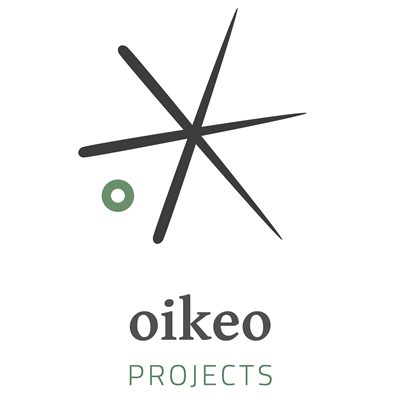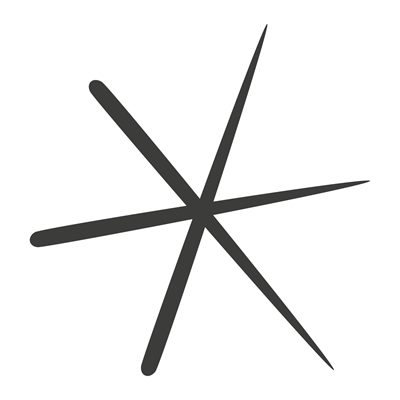

19.07.2015
Geschichten, spinnwebengleich gewoben und verflochten, Jahrtausende, Jahrhunderte oder auch nur Jahrzehnte verbindend, begleiten uns durch British Columbia. Hier bekommen wir die Geschichte Kanadas vor Augen geführt, von der Zeit der First Nations, über den Goldrausch, der Tausende in dieses Land strömen liess, bis hin zur heutigen Situation des Zusammenlebens all dieser Kulturen, die sich im Laufe der Zeit in Kanada niedergelassen haben. Hier schauen wir auch zurück auf ein Stück persönlicher Familiengeschichte.
Von der Rocky Mountains her kommend folgen wir dem Fraser River, die Lebensader dieser Region. Wir fahren auf dem Cariboo Highway, eine Strasse, die zugleich das Tor zur Geschichte des Goldrausches in Kanada bildet. Der erste Goldfund im Fraser River anfangs 19. Jahrhundert löste einen regelrechten Sturm auf die Gegend aus. Aus Abenteuerlust oder mit dem Traum vom sofortigen Reichtum brachen Tausende Männer, manchmal mitsamt Familie, aus verschiedenen Ländern nach Kanada auf. Und im Land, in dem die First Nations seit Jahrtausenden ihre Kultur und Lebensweise aufgebaut hatten, trafen diese erstmals aufeinander. Nicht immer nur friedlich, wie man sich gut vorstellen kann. Die Folgen sind noch immer spürbar und uns scheint, als würde den Stimmen der First Nations noch heute nicht genügend Raum gelassen.
British Columbia bedeutet auch in unserer persönlichen Zeitrechnung ein Meilenstein: hier treffen wir auf den Pazifischen Ozean, nachdem wir in den letzten Wochen ganz Kanada durchquert haben. Und nicht nur das: Hier dürfen wir ein kleines Stück Familiengeschichte weiterweben, das vor 40 Jahren in Vancouver angefangen hat. Als junge Frau lebte Simons Mutter während einiger Zeit als Aupairmädchen bei einer Familie in dieser Stadt. Die Beziehung hielt an, und so haben wir heute die Möglichkeit, einige dieser Familienmitglieder kennenzulernen. Erste Station ist für uns die Stadt Victoria, auf Vancouver Island. Hier wohnt das nun erwachsene Aupairkind mit ihrer Familie. Leider sind sie und ihre Tochter gerade ferienhalber abwesend, doch wir dürfen bei ihrem Mann und dem liebenswürdigen Hund wohnen. Wir geniessen es, einen stadtkundigen Guide zu haben, der uns vieles über Victoria und die Insel erzählen kann. Das vielfältige Stadtbild, die entspannte Atmosphäre und der fast rundum gehende Meereszugang von Victoria begeistern uns. Auch die Flora der Insel ist ganz anders als alles bisher erlebte: So gibt es auf der Insel regelrechten Regenwald, dicht und wuchernd, und auch zwei endemische Bäume können wir in Victoria bewundern: die Gary Oak (Oregon Eiche) und den Arbutus (Amerikanischer Erdbeerbaum). Fast märchenhaft, und doch für die Bewohner Victorias manchmal störend, sind die vielen Tiere im Stadtbild. So ist es nicht verwunderlich, am helllichten Tag mitten in der Stadt einen Hirsch oder ein Reh anzutreffen.
Im Museum erfahren wir mehr über die First Nations dieser Region (Haida, Kwakwaka'wakw, Gitxsan, Tsimshian, Nisga'a unter vielen anderen - die auch meist ihre eigenen Sprachen haben) und besuchen die Sonderausstellung über den Goldrausch. Vor unserem inneren Auge verbindet sich das Gelesene mit den soeben durchreisten Gegenden und die Stadt Victoria mit der ältesten Chinatown Kanadas zeigt uns nochmals auf, wie multikulturell dieses Land schon seit Generationen ist.
Eine Tagesetappe von Victoria entfernt liegen Kanadas schönste Strände. Rau und wild, naturbelassen und wunderschön. Hier verbringen wir drei Tage mit langen Strandspaziergängen, kleinen Wanderungen durch die Wälder und staunendem Innehalten und die Aussicht geniessend. Hier hat es nicht nur gute Surferwellen im (kalten!) Wasser, sondern auch viele besonders alte Bäume im Wald. Das milde Klima und die guten Wachstumsbedingungen tragen dazu bei, dass die Zedern riesig werden und ihr Umfang schon mal ein paar Meter betragen kann. Durch den dichten Regenwald zu gehen und immer wieder neue dieser Baumriesen zu sichten, fasziniert uns. Welche Geschichten sich wohl in ihren zahlreichen Jahresringen verbergen?
Nach diesen schönen Tagen Naturgenuss wartet nun ein letztes Kapitel in Kanada auf uns: die Grossstadt Vancouver. Die Fähre bringt uns über den Meeresarm zurück aufs Festland und augenblicklich sind wir wieder mitten drin im Gewusel. Wir freuen uns darauf, hier eine neue Stadt zu entdecken, neue/alte Bekanntschaften zu machen und auch unsere weitere Route durch die USA zu planen.
Stories woven and interwoven like cobwebs, connecting millennia, centuries or even just decades, accompany us through British Columbia. Here we get to see the history of Canada, from the time of the First Nations, to the gold rush that poured thousands into this country, to the current situation of the coexistence of all these cultures that have settled in Canada over time. Here we also look back on a piece of personal family history.
Coming from the Rocky Mountains we follow the Fraser River, the lifeline of this region. We drive on the Cariboo Highway, a road that is also the gateway to the history of the gold rush in Canada. The first gold discovery in the Fraser River at the beginning of the 19th century triggered a real storm in the area. Thousands of men, sometimes with families, set out for Canada from different countries out of a thirst for adventure or with the dream of instant wealth. And in the country where the First Nations had built up their culture and way of life for thousands of years, they met for the first time. Not always peaceful, as you can well imagine. The consequences are still being felt and it seems to us that the voices of the First Nations are still not given enough space.
British Columbia also represents a milestone in our personal calendar: here we meet the Pacific Ocean, after having crossed all of Canada in the last few weeks. And not only that: Here we continue weaving a small piece of family history that began 40 years ago in Vancouver. As a young woman, Simon's mother lived for some time as an au pair with a family in this city. The relationship continued, and today we have the opportunity to meet some of these family members. The first stop for us is the city of Victoria, on Vancouver Island. The now adult woman whom Simons mother used to take care of, lives here with her family. Unfortunately, she and her daughter are absent for holidays, but we still get to stay with her husband and the lovely dog. We enjoy having a local guide who can tell us a lot about Victoria and the island. The diverse cityscape, the relaxed atmosphere and the almost all-round sea access of Victoria inspire us. The flora of the island is also very different from anything we have experienced before: there is real rainforest on the island, dense and sprawling, and we can also admire two endemic trees in Victoria: the Gary Oak (Oregon oak) and the Arbutus (American strawberry tree ). The many animals in the cityscape are almost fairytale-like, and yet for the residents sometimes a bit annoying. So it is not surprising to find a deer or a doe in broad daylight in the middle of the city.
In the museum we learn more about the First Nations of this region (Haida, Kwakwaka'wakw, Gitxsan, Tsimshian, Nisga'a among many others - who mostly have their own languages) and visit the special exhibition about the gold rush. In front of our inner eye, what we have read connects with the areas we have just traveled through and the city of Victoria with Canada's oldest Chinatown shows us once again how multicultural this country has been for generations.
Canada's most beautiful beaches are a day's drive away from Victoria. Rough and wild, natural and beautiful. Here we spend three days with long walks on the beach, short hikes through the woods and pausing in amazement and enjoying the view. Here there are not only good surfing waves in the (cold!) water, but also many particularly old trees in the forest. The mild climate and the good growing conditions contribute to the fact that the cedars become huge and their circumference can be a few meters. We are fascinated by walking through the dense rainforest and seeing more and more of these giant trees. Which stories are hidden in their numerous annual rings?
After these beautiful days of enjoying nature, a last chapter awaits us in Canada: the big city of Vancouver. The ferry takes us over the inlet back to the mainland and immediately we are back in the middle of the hustle and bustle. We look forward to discovering a new city here, making new / old acquaintances and also planning our further route through the USA.


